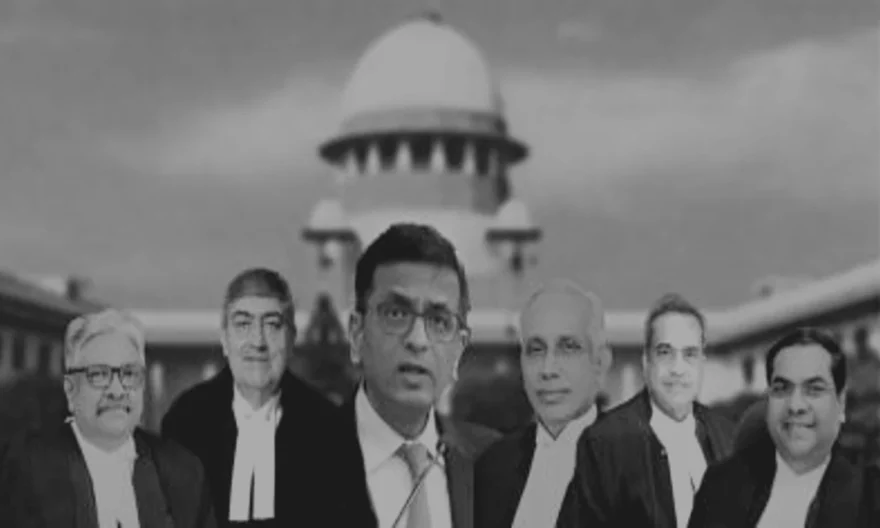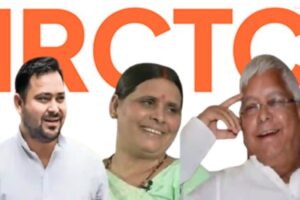
The Supreme Court of India is perhaps the most powerful court in the world. Since its establishment, the Court has made a remarkable contribution to protect the rule of law, constitutional- ism, judicial independence, and democratic values in the country. By exercising its judicial review power, the Court has also im- posed some restrictions on the law-making and Constitution-amending power of Parliament which has ultimately promoted a controlled constitutional governance in the country. The ‘Basic Structure Doc- trine’ devised by the Court in the famous Kesavananda Bharathi case has also been imported to some foreign jurisdictions. In addition, the ‘Public Interest Litiga- tion’ jurisprudence, devel- oped by the Court since 1970s, has been admired by the global juristic commu- nity. Thus, the Court has a great record of protecting personal liberty, human dignity, and fundamental constitutional principles. For a common Indian, the Court is a great ray of hope to get justice.
During the last few years, the composition of Court has been the point of dis- cussion among the common people who want to see a more inclusive and diversi- fied judiciary in the country. It is generally believed that the Apex Court is dominat- ed by a few upper Hindu castes and it should be made more representative to re- flect the diversity of the na- tion. Since 1993, the power
IN COURT
to appoint the judges of the Supreme Court and High Courts is exercised by the Supreme Court collegium headed by the Chief Justice of India (CJI). However, the Constitution does not recog- nize the collegium system of appointing judges. Under the existing collegium sys- tem, the Union Government is bound to appoint the judges on the recommenda- tion of the collegium. Only a limited scope is available to the government to influence the appointment process of judges. The Modi govern- ment seems to be unhappy with the collegium system ever since it came into pow- er. In 2014, the government had brought the NJAC but the Supreme Court declared the same unconstitutional in 2015 and retained the power to appoint judges in its hands. The government
had no option but to accept the verdict. However, the government delayed the appointments of several judges for a long time. As of now, hundreds of col- legium recommendations are pending with the gov- ernment and the Supreme Court has taken a notice of this delay on its judicial side. Neither the govern- ment nor the Court has ad- dressed the issue of diversi- ty effectively. In the existing framework, the collegium is duty-bound to bring diver- sity in the judiciary. Also, the government has a duty to remind the collegium about this goal.
The Supreme Court has a sanctioned strength of 34 judges including the Chief Justice of India. As of now, seven vacancies of judges are lying vacant. Today, the Supreme Court has only
one Muslim judge, three women judges, one Parsi judge, one Christian judge, two Dalit judges, but no Sikh, no Buddhist, no Jain, no Adivasi, and no OBC judges particularly from the northern part of the country, which is called the OBC belt. There are many judges in the Court who belong to some Upper Hindu castes which have always dominated the judiciary in our country. These communities are al- ways overrepresented in the higher judiciary. Many con- stitutional pundits, and legal analysts rightly believe that the Court needs more judg- es from the unrepresented communities and regions to sustain the public trust in the institution of the judi- ciary. After all, the judiciary is the last ray of hope for the common people who knock on its doors for getting jus-
tice and such an institution should be a role model.
Notably, ever since its es- tablishment, the Supreme Court has had several bril- liant Muslim judges who made a great contribution to the judicial system in our country. Out of them, four judges namely Justices M Hidayatullah, M H Beg, A M
Ahmadi, and Altamas Kabir graced the office of the Chief Justice of India. Other Mus- lim judges of the Supreme Court were: Saiyed Fazl Ali, Ghulam Hasan, Syed Jafar Imam, Syed Murtaza Fazl Ali, Baharul Islam, V Kha- lid, Fathima Beevi, Faizan- uddin, S Sagir Ahmad, SS M Qadri, Aftab Alam, MY Eqbal, FM Ibrahim Kaliful- la. Presently, Justice Abdul Nazeer is the only Muslim judge in the top court and he is also going to retire in January next year. There is a
general belief in society that the Supreme Court should have more judges from the minority communities particularly the Muslims, the second largest commu- nity in the country because Muslims constitute around 15 per cent of the popula- tion. Many legal luminaries and thinkers believe that Muslims should get ade- quate representation in the higher judiciary so that the minorities could have faith in the highest judicial insti- tution that decides the legal destiny of the nation. There should always be two or three Muslim judges in the Apex Court. We also need judges from other minor- ity communities like Sikhs, Jains, and Buddhists.
As mentioned earlier, under the existing practice and procedure of judicial appointments, the Supreme Court collegium headed by the Chief Justice of India has the conclusive power to appoint the judges of the Su- preme Court and the High Courts after the Second, Third, and Fourth Judges cases. The unanimous rec- ommendations of the Su- preme Court collegium are binding on the President of India who acts on the ad- vice of the Prime Minister and Union Law Minister to issue the formal warrant of appointments. However, the Central Government has also a limited role in the process of judicial appoint- ments. It checks the anteced- ents of the recommended persons deeply through the Intelligence Bureau and other agencies and sends its report to the collegium for its consideration by men- tioning the cogent reasons
and objections along with the supporting material. But, if the Supreme Court collegium reiterates its rec- ommendations, the Central Government and the Presi- dent will have no option but to act on the same. So, it is the collegium that is the actual judge-maker in the country. This is why it be- comes necessary on the part of the collegium to maintain a balance in making judicial appointments to give ad- equate representation to all sections of society, in the Su- preme Court. The collegium should address the issue of diversity effectively.
Let me highlight one more important issue that has been badly ignored by the Central Government as well as the judiciary. Under
Article 124 of the Consti- tution, the appointments to the Supreme Court are made from three categories — judges, lawyers, and pro- fessors. Mostly, the judges of the High Courts and law- yers are appointed to the Supreme Court based on their seniority, professional competence, integrity, and merit. Even after 70 years of the Supreme Court’s establishment, no appoint- ment of a distinguished jurist has been made in the Supreme Court despite the availability of constitutional provisions to this effect un- der Article 124(3)(c). The President of India needs to identify a “distinguished jurist” in consultation with the Central Government which requires the approval of the Supreme Court colle- gium that has the final say in judicial appointments. Admittedly, India has many brilliant law professors who
have made a wonderful con- tribution to the legal system and can contribute more if the collegium provides them opportunities on the Supreme Court Bench. Has not the time come when the collegium should con- sider the appointment of an eminent law professor as a Supreme Court judge? This provision to appoint distinguished jurists as judges in the top court was incorporated in the Consti- tution by our founding fa- thers who were inspired by some foreign jurisdictions that had appointed eminent law professors as judges in their top courts. There is an urgent need to activate this dormant constitutional provision to include the pro- fessors of law in the judicial adjudication process in the country?
Given the above discus- sion, it is submitted that the Supreme Court collegium headed by CJI Dr. D Y Chan- drachud may consider di- versifying the Bench by ap- pointing more judges from different sources, communi- ties, and regions of the coun- try to strengthen the public trust and credibility of the judiciary. A more inclusive and diversified Court is need of the hour. No caste or com- munity should be allowed to dominate the higher ju- diciary. As of now, the colle- gium needs to appoint seven judges in the Supreme Court. This is a great opportunity to promote diversity on the bench of the top court of the country. It will have a far- reaching impact on the func- tioning and performance of the apex court which must reflect the collective ma




